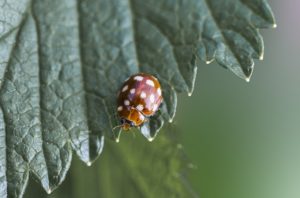
As we celebrate the 52nd anniversary of Earth Day, PacBio reflects on how the power of genomics can be harnessed in the spirit of this year’s theme: “invest in our planet.” Earth Day brings reminders of the incredible diversity of life to which our planet is home. Yet, now more than ever, we are also reminded of the many threats posed to Earth’s biodiversity, including climate change, habitat degradation, and invasive species. Innovations in genomics offer hope in addressing these threats, but we must work together to equitably implement global solutions. Creating a true partnership for our planet will help preserve and protect our health and livelihoods for generations to come.
Agrigenomics for biodiversity
As ongoing research has shown, climate change is depleting the world’s biodiversity, with half of plant and animal species in the world’s most naturally rich areas at risk of local extinction by the end of the century.
“Genomics presents several avenues to explore and counteract the effects of climate change on biodiversity. Genome sequencing allows scientists to catalog species’ genomes, monitor population genomic dynamics, identify mechanisms for adaptation, and prompt management and restoration solutions.”– Kaylee Mueller, Senior Marketing Specialist, Plant and Animal at PacBio
 In recent years, invaluable partnerships have been formed with the goal of preserving biodiversity, including PacBio’s recent partnership with the European Reference Genome Atlas (ERGA). This alliance aims to generate high-quality reference genomes for 200,000 European plant and animal species, setting European biodiversity on the road to recovery by 2030. This partnership builds on the work of several other existing consortia: For example, The Darwin Tree of Life Project (DToL) embodies their slogan to “sequence locally, think globally” with the goal of generating 4,200 reference genome assemblies for every taxonomic family found in Britain and Ireland. DToL joins several other sequencing consortia such as the Vertebrate Genomes Project and the Arthropod i5k project. These programs all contribute toward ambitious collectives like the Genome 10K Community of Scientists and the Earth BioGenome Project, which, as highlighted in the recent PNAS Special Feature, aims to sequence all known eukaryotic species over a period of ten years. These collaborative initiatives demonstrate how progress toward preserving biodiversity can be achieved by international and cross-sector partnerships.
In recent years, invaluable partnerships have been formed with the goal of preserving biodiversity, including PacBio’s recent partnership with the European Reference Genome Atlas (ERGA). This alliance aims to generate high-quality reference genomes for 200,000 European plant and animal species, setting European biodiversity on the road to recovery by 2030. This partnership builds on the work of several other existing consortia: For example, The Darwin Tree of Life Project (DToL) embodies their slogan to “sequence locally, think globally” with the goal of generating 4,200 reference genome assemblies for every taxonomic family found in Britain and Ireland. DToL joins several other sequencing consortia such as the Vertebrate Genomes Project and the Arthropod i5k project. These programs all contribute toward ambitious collectives like the Genome 10K Community of Scientists and the Earth BioGenome Project, which, as highlighted in the recent PNAS Special Feature, aims to sequence all known eukaryotic species over a period of ten years. These collaborative initiatives demonstrate how progress toward preserving biodiversity can be achieved by international and cross-sector partnerships.
Agrigenomics for sustainable agriculture
 In addition to characterizing and cataloging Earth’s biodiversity, genomics can also be used to support efforts toward sustainable agriculture.
In addition to characterizing and cataloging Earth’s biodiversity, genomics can also be used to support efforts toward sustainable agriculture.
While agriculture is responsible for over 10% of total U.S. greenhouse gas emissions, it is not itself impervious to the detrimental effects of climate change like droughts, floods, and destabilized ecosystems. As a result, feeding a growing global population will pose a very real challenge in the coming decades.
“As we think about developing technology for sustainable agriculture, we must consider tools that generate a more nutritious and climate-resilient food supply without further damaging our ecosystems. Genomics is a crucial component in these efforts to offer a carbon-zero solution for plant breeding and the development of pest-resistant crops, ensuring our food’s shelf life is extended.”– Jonas Korlach, Chief Scientific Officer at PacBio
Particularly promising is the contribution of pangenomes that represent the full genomic composition of a species, as they can capture underlying variation that may be otherwise hidden from a reference genome generated from a single individual. Pangenomes can be created through the targeted sequencing of representative crop lines or built over time through the sequencing of reference genomes according to their applications. Pangenomes have been constructed for valuable staple crops including soybean and maize, allowing for the deeper analysis of these species and the mapping of agriculturally relevant traits like pest and pathogen resistance. Genomics has also highlighted the potential of “orphan” crops that are locally important to specific regions but globally underutilized and under-researched.
These developments represent the significant strides partnerships in genomics have made toward preserving our biodiversity and ensuring food security through sustainable agriculture. As highlighted in our recent partnership announcement with Corteva Agriscience, we at PacBio are proud to contribute to this mission, and know that we must work together to achieve these goals.
Interested in learning more about the ways that genomics can contribute to a more sustainable planet? Watch CEO Christian Henry’s talk “Sequencing for a better future” from PAGBioDay 2022 to hear more on how a green future is a brighter future.